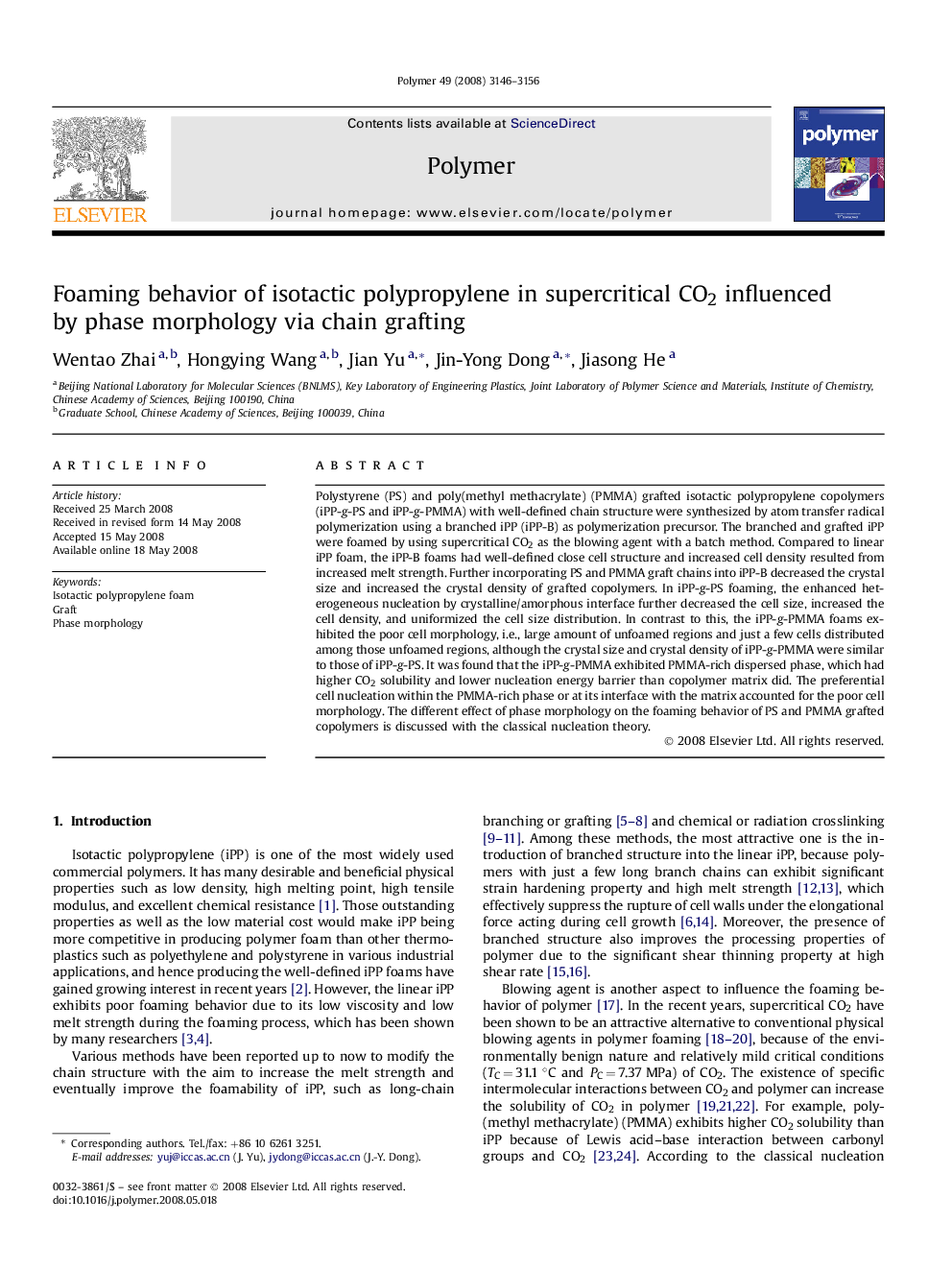| Article ID | Journal | Published Year | Pages | File Type |
|---|---|---|---|---|
| 5186751 | Polymer | 2008 | 11 Pages |
Polystyrene (PS) and poly(methyl methacrylate) (PMMA) grafted isotactic polypropylene copolymers (iPP-g-PS and iPP-g-PMMA) with well-defined chain structure were synthesized by atom transfer radical polymerization using a branched iPP (iPP-B) as polymerization precursor. The branched and grafted iPP were foamed by using supercritical CO2 as the blowing agent with a batch method. Compared to linear iPP foam, the iPP-B foams had well-defined close cell structure and increased cell density resulted from increased melt strength. Further incorporating PS and PMMA graft chains into iPP-B decreased the crystal size and increased the crystal density of grafted copolymers. In iPP-g-PS foaming, the enhanced heterogeneous nucleation by crystalline/amorphous interface further decreased the cell size, increased the cell density, and uniformized the cell size distribution. In contrast to this, the iPP-g-PMMA foams exhibited the poor cell morphology, i.e., large amount of unfoamed regions and just a few cells distributed among those unfoamed regions, although the crystal size and crystal density of iPP-g-PMMA were similar to those of iPP-g-PS. It was found that the iPP-g-PMMA exhibited PMMA-rich dispersed phase, which had higher CO2 solubility and lower nucleation energy barrier than copolymer matrix did. The preferential cell nucleation within the PMMA-rich phase or at its interface with the matrix accounted for the poor cell morphology. The different effect of phase morphology on the foaming behavior of PS and PMMA grafted copolymers is discussed with the classical nucleation theory.
Graphical abstractDownload full-size image
